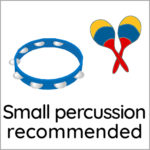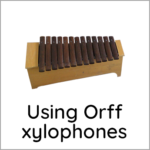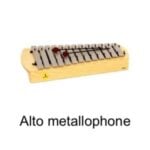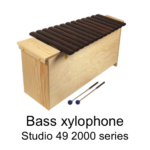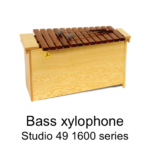Babies / Toddlers
I did not add recommended quantities, since it depends on how many students you have… one or two of each of the instruments, enough so each child gets something.
My faves:
Early Childhood
Children ages 2 to 5 can tend to have more trouble sharing and waiting their turn. I have found it helpful to have a lot of one kind of instrument, maybe 1 for each child in the class or at least for half the class so the children don’t have to wait long – or so they can switch instruments.
My faves:
Elementary
As much as possible, on the days I get out the instruments, I want each child to have a turn playing something. I like to have enough of each instrument for ¼ of the class. That way, if I am only using one kind instrument that day, we can repeat the song 3 times and give everyone a turn. If you don’t have the budget or space for that many instruments, I suggest you have enough of each category of instrument for ¼ of the class. For instance:
- 6 Skins = hand drums & tambourines
- 6 Woods = woodblocks & claves
- 6 Scrapers/Shakers = guiros, cabasas, maracas
- 6 Metals = triangles, finger cymbals (I didn’t include regular cymbals because they are so loud!)
My faves:
Other fun instruments:
Cleaning, Maintaining & Repairing
I know for many of you, the Orff instruments were at your school already when you got the job. So what you might be looking for is how to clean, maintain and repair your instruments. Here are some great videos that will help you:
Buying New
Now, if you are fortunate and someone hands you some cash to purchase some new Orff instruments, here is what I have found after doing some online research.
For the regular-sized xylophones, check out Sonor. I really like what Judy from West Music describes as the “best” (Sonor Palisono). This fiberglass xylophone has a full 2 octaves, which allows two students to use it at the same time. So you pay more than the lower quality ones, but you don’t need to buy as many. My favorite xylophone is on this video at 9:20.
And now for the bass xylophone: This video discusses how Studio 49 has created a smaller and more economically priced version. Obviously, the bigger (2000 series) one is more resonant, but if you have less space, the 1600 series might be what you’re looking for.
If you purchase metallophones, look for ones with damper bars. In one of my schools I had a bass metallophone I couldn’t stand to use because of the loud sustained sounds of the bars. Talk about getting more for your money! Metallophones are great for half and whole notes, but with the damper bars, they can also play non-sustained tones.
One year I purchased bass xylophone/metallophone rolling stands. I highly recommend them if you have to move the basses around. (They also fit tenor/alto xylophones & metallophones.)

These step bells are handy for students to visualize the upward and downward movement of the scale. The one with removable resonator bells is twice the cost of the regular one. I wouldn’t use the cheaper one regularly, since I’m not impressed with the sound. I have just used it for visualization purposes. (I haven’t used the step resonator bells so I don’t know what they sound like.) It would be nice if they sold just the ladder so if you already have resonator bells, you could use them…
Set Up and Storage
Here is how I set up my instruments in my classroom, using the beg, borrow and steal method (i.e. use what you can because the budget is small)! I also got rid of my teacher desk in order to make more space.
When I first started teaching, I was really into control over my instruments. I would pass them out. Later, I learned to let the students pass out the instruments. (I had trained them how to be careful and not play until it was time to play.) So I made my instruments easy to reach. Some were hung on the wall with 3M hooks.
Others were stored on top of file cabinets and in bins in shelves.

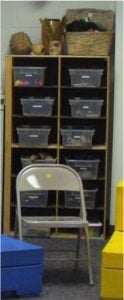
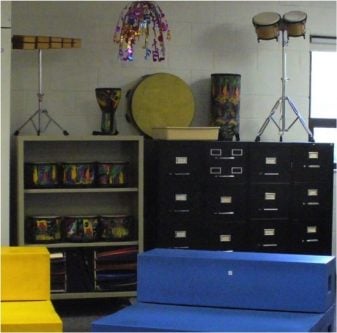
I kept the xylophones out and ready to use. (When they weren’t in use, they were covered with fabric.)

Dust covers are helpful if you leave your instruments out in the open. You can purchase them (see this video) or you can do what I did and cover them with pieces of fabric or sheets.
I am a fan of open shelves for instruments students can access. Also, it makes it easier for you to grab and go! Here are some examples I found online.










Storing instruments for music on a cart
(Also check my post here.)





